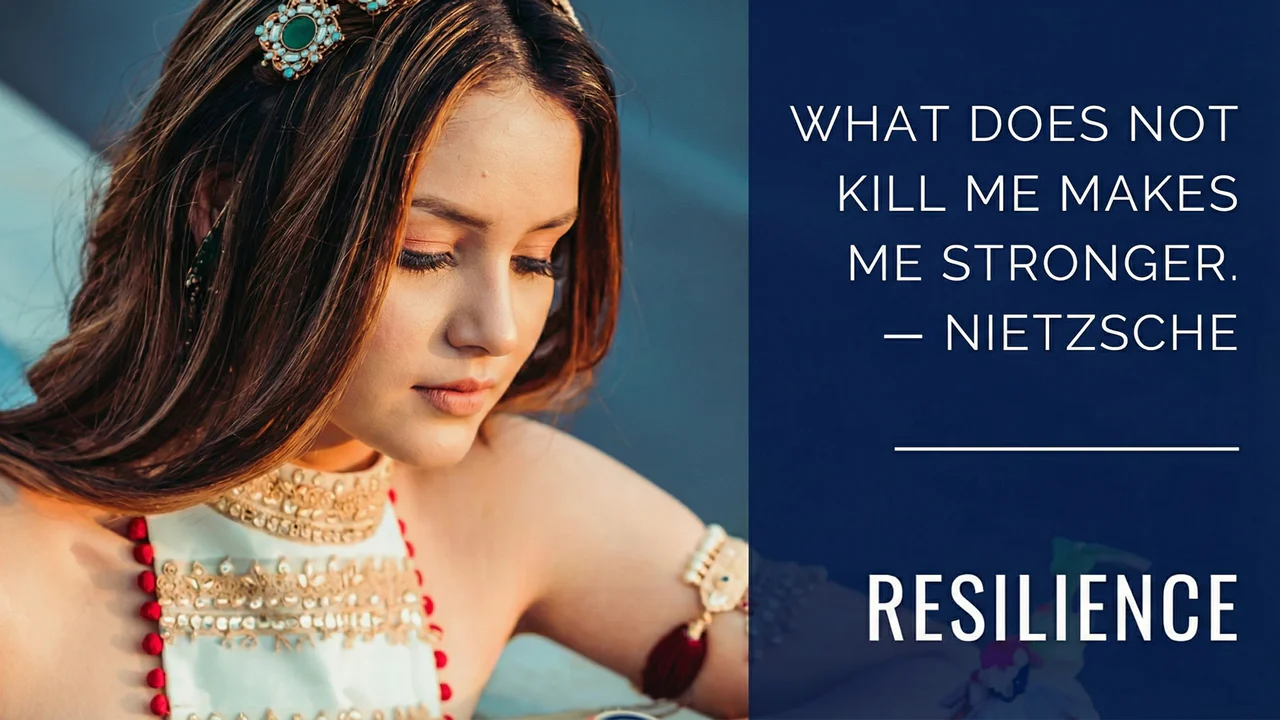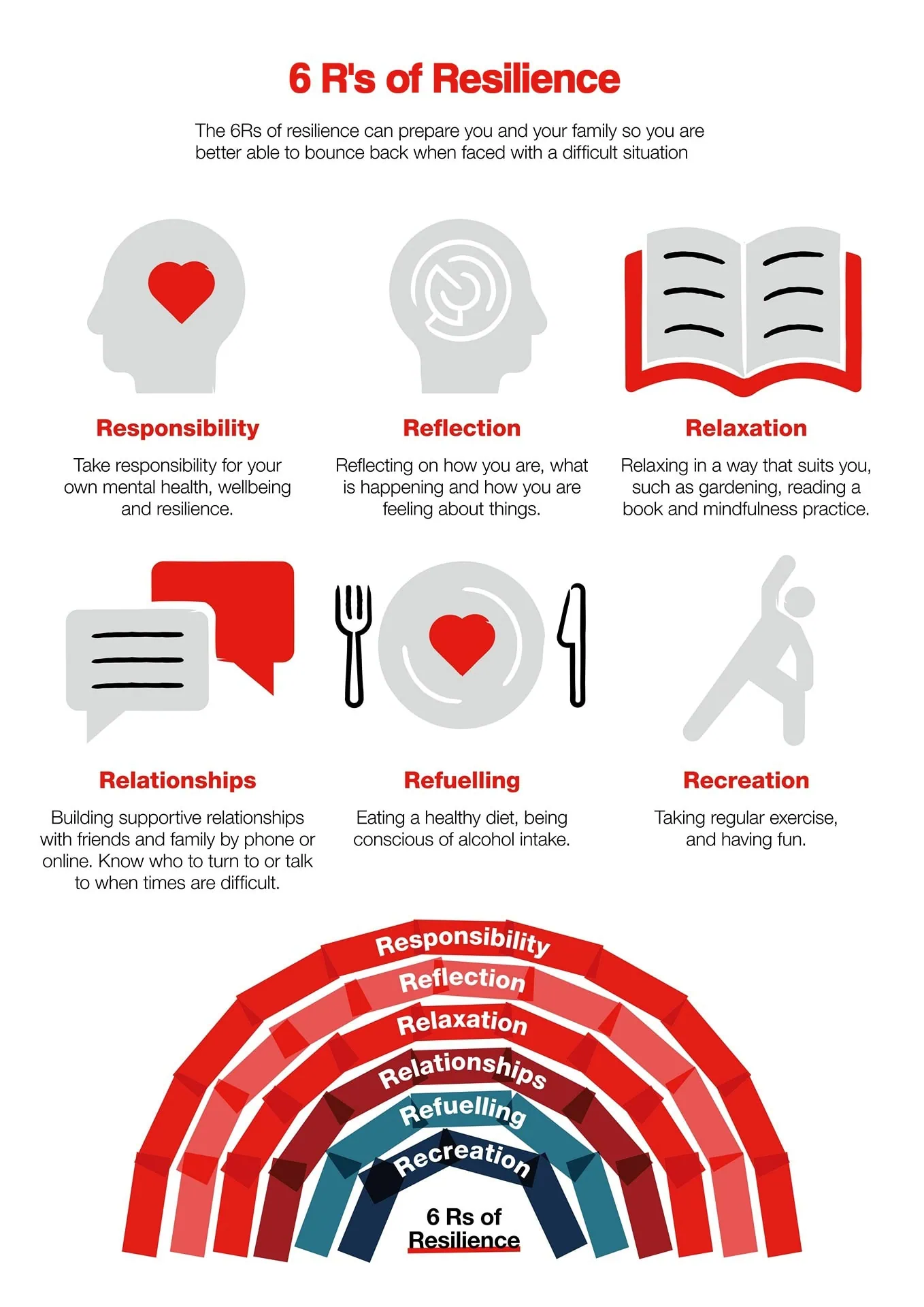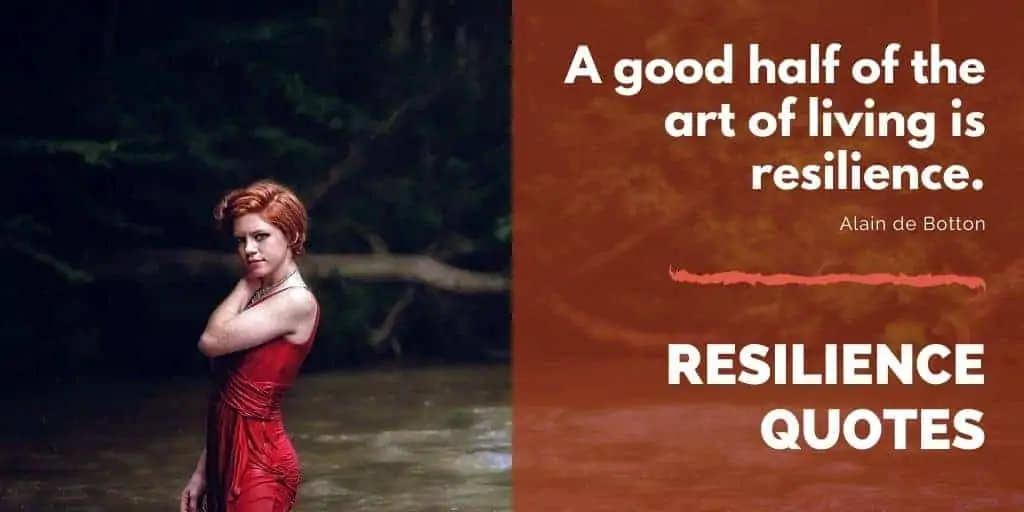Today's Monday • 12 mins read
Your resilience can help you live up to 10 years more, says science.
Though the word resilience is used in psychology, ecology, and engineering, the meaning remains the same — resistance and recovery from distress.
What Is Resilience In Psychology
Resilience in psychology is the human ability to bounce back better from misery or adversity. Resilient people not only recover stronger from a crisis, but often also find meaning in life from the experience. Ledesma (2014) defines psychological resilience as “the ability to bounce back from adversity, frustration, and misfortune.”
Resilience has many names: hardiness, toughness, spunk, tenacity, fortitude, mettle, grit, and strength. Psychologists use the term to mean the human ability to recover from hardships and misfortunes.
Resilient people fight stressful events, pull through those experiences, and grow from them.
The good thing is that resilience is not a quality only some of us are born with. We all have resilience, albeit some more and others less.
Moreover, experts assure us it is a skill that we can make stronger with practice, like any other skill.
Our natural capacity for growth after a stressful event is quite remarkable. Called post-traumatic growth (PTG), it means becoming a more capable person after a traumatic experience (Tedeschi & Calhoun, 2004).
According to Ann Masten, a professor at the University of Minnesota College of Education and Human Development:
Resilience is the “capacity of a dynamic system to adapt successfully to disturbances that threaten system function, viability, or future development of the system.”

Humans are not just capable of handling the fall, but also rising and coming back stronger after the fall.
Meaning of Resilience In Positive Psychology
In positive psychology, resilience means the ability to —
- put up a brave face in times of adversity and hard times,
- use the available strengths and resources to resist and cope,
- recover and flourish from the event and experience.
Resilient people frequently find a purpose in their adverse experiences and grow more capable out of them. The German philosopher Nietzsche knew about it, and said:
What does not kill me makes me stronger.
All of us can learn to be more resilient. But when a person gives in to the view they cannot build resilience, they become more prone to accept vulnerability and defeat easily.
What Resilience Does Not Mean
Resilience does not mean we reject our negative and unpleasant emotions.
When we deny our negative emotions, we unconsciously yield to them. This downgrades our resilience. However, when we accept them and allow them to flow over us, we take back control and begin the process of recovering from the situation causing them.
Feeling and expressing our negative emotions is a sign of our mental strength. And that grows our resilience against them.
Why It Is Important To Have Resilience
Why is it important for us to bounce back?
Resilience is important as it gives us the strength to process and overcome hardships.
Those who lack strong resilience can buckle under pressure, and turn to unhealthy ways to cope with stress. Resilient people are better able to handle adversity and rebuild their lives after any catastrophe.
Resilience is important because:
- it enables us to develop strategies for shielding ourselves against catastrophic experiences,
- it helps us to hold on steadfast in our lives during traumatic and stressful times,
- it serves us to guard ourselves against some serious mental health issues like depression and self-harm.
Resilience is also one of the most essential traits of happy people. And we humans are good at ultimately finding our way to happiness.
Without resilience, the human species couldn’t have survived 200,000 years of disasters and adversities, and grown into the most intelligent beings on this earth.
Resilience is a natural part of the human survival experience after any major stressful event, such as the Coronavirus global outbreak.
How One Maverick Psychologist, Bonanno, Changed Our Views On Resilience
A psychology professor at Columbia University and pioneering researcher in the field of bereavement and trauma, George A. Bonanno revolutionized the field of resilience.
Before Bonanno, psychologists widely held that people rarely developed resilience soon after a traumatic experience. Bonanno showed that the way most people do not respond that way.
Bonanno bust the myth that humans must mope before they could cope.
Bonanno led a team that surveyed 2,752 New Yorkers after the 9/11 incident at the WTC. They found that 65% of participants had either none or only one symptom of PTSD for six months. And more than 50% of those who helped with the rescue effort, or were at the disaster site, reported few or no PTSD symptoms.
Bonanno drew three path-breaking conclusions from the study:
- Resilience is different from recovery.
- Resilience is a common, not rare, trait.
- There are multiple pathways to resilience.
He said most people are resilient while they are dealing with trauma or loss. They do not wait until the event is over to start their coping process.
Bonanno also shook the world of psychology with the claim that grief therapy does not offer any overall positive benefit. He said that it does more harm than good, as about one-third of the people become worse after grief therapy.
When the worst possible news breaks, you will almost certainly get through it unscathed. Almost everyone does.
— George A. Bonanno (The Other Side of Sadness)
Bonanno found that while most can figure out effective ways to handle life’s challenges, some do so in messy ways. He coined the phrase “coping ugly” for such processes.
In “coping ugly,” resilient people often develop characteristics that are not altogether their natural selves. It happens while they are trying to control their situation and do something about it.
For example, people recovering from a calamity may suddenly start to behave as narcissists.
2 Limitations of Resilience
Positive psychologists have unearthed two limiting features of resilience:
- All are not equal: Even when we all have resilience, we do not have it in equal amounts. Some are more resilient than others.
- Less harsh is better: We are more likely to bounce back better when stressful events are less harsh and less often. And when we have people to support us.
3 P’s That Block Resilience
Martin Seligman, the father of Positive Psychology, found that pessimists often think that negative things will last a long time, undermine every other thing they do, and they will suffer the most out of all those dealing with a similar problem.
These are the 3 P’s that hinder our growth after an adverse situation:
- Permanence, the thought that this tough time will last forever.
- Pervasiveness, the thought that this will affect all areas of our lives.
- Personalization, the thought that it affects us the most, like no one else.
We can and must learn to push back these 3 P’s that hamper our recovery and resilience.
4 Types of Resilience
Jane McGonigal, a gamer scientist, in her TEDx talk tells us that there are four types of resilience. She said people who boost these four behaviors regularly live up to 10 years longer than those who don’t.
Here are the four types:
- Physical resilience. You are physically resilient if you don’t sit still longer than an hour at a time. I don’t know about you, but as I age, the temptation to sit on the couch or to nurse a pain by not moving is high. A physically resilient person makes physical activity a priority.
- Mental resilience. You are mentally resilient if you regularly challenge your brain with puzzles, board games, new hobbies, book-reading, or complex activities like gardening. In short, mentally resilient folks often take their brains outside their comfort zone.
- Emotional resilience. You are emotionally resilient if you regularly reflect on things beautiful, fanciful, and visionary. It is exercising your ability to imagine, dream, plan, and create. It allows you to find the silver linings in the dark clouds.
- Social resilience. This is built by staying in touch with others. Hugs, handshakes, and talks stimulate the brain. Have some friends you look forward to visiting, and invite them over to stay socially engaged.
5 Skills of Resilience
According to Glyn Blackett of Stress Resilient Mind, the five key resilience skills are:
- Self-awareness
- Attention – flexibility & stability of focus
- Letting go (1) – physical
- Letting go (2) – mental
- Accessing & sustaining positive emotion
According to Leonie Hurrell, however, there are seven key skills of resilience:
- Resilient people are adaptable
- Resilient people are optimistic
- Resilient people are pragmatic
- Resilient people are autonomous
- Resilient people are socially connected
- Resilient people have realistic self-awareness
- Resilient people demonstrate self-compassion
6 Competencies of Resilience
Master Resilience Training (MRT) is a 10-day resilience training program offered by the United States Army. It is a joint effort between the Positive Psychology Center at the University of Pennsylvania and the United States Army.
The goal of this training is to build resilience in non-commissioned army officers. Its curriculum helps build the following six core competencies of resilience: Self-Awareness, Self-Regulation, Optimism, Mental Agility, Strengths of Character, and Connection.

6 R’s of Resilience

7 C’s of Resilience
Pediatrician Kenneth Ginsburg specializes in building resilience in kids. He developed the 7 C’s model to offer a practical approach for parents and communities to prepare children to thrive.
If you are a parent, then find time to read his award-winning book Building Resilience in Children and Teens: Giving Kids Roots and Wings to help build resilience in kids from the age of 18 months to 18 years.
Here’s a brief introduction to Ginsburg’s 7 C’s (competence, confidence, connection, character, contribution, coping, and control):
- Competence. The ability to handle challenging situations well. Encourage children to build their strengths. Let children make some safe mistakes so they can correct themselves.
- Confidence. A strong belief in one’s own abilities. Encourage cultivating personal qualities like fairness, integrity, persistence, and kindness. Praise children honestly and specifically.
- Connection. Give your child your unconditional love. Empathize with their positive and negative emotions. Allow them to freely express all emotions, not suppress the unpleasant ones.
- Character. The fundamental sense of right and wrong, so that the child is prepared to contribute to the world positively. Encourage children to consider right versus wrong when making their choices. They should always be a role model to the child, as actions speak louder than words.
- Contribution. Children get a sense of purpose when they see how important their contributions are to the world, and this motivates them to take similar positive actions in the future. Teach their children the value of serving others who lack the good things in life. They can find opportunities for children to volunteer.
- Coping. Children who learn to cope with stress well become better at overcoming life’s challenges. They can learn to avoid unnecessary anxiety. Parents can avoid reacting emotionally when they feel overwhelmed. They can teach the children the importance of exercise, nutrition, sleep, and relaxation.
- Control. Children who get some control over the decisions that affect their lives become more resilient as they know they have internal control. Parents can encourage their children to recognize and celebrate their successes, small or big. They can reward the carrying out of responsibility with increased freedom.
• Resource for understanding resilience: https://online.wellnessinstitute.org/resilience/
How To Measure Resilience
There are about 20 validated resilience scales. We can only mention a few here. To find out more about how the scales hold up against each other, check out this paper.
• RSA: This resilience scale was developed by Friborg & Hjemdal in 2003 to measure individuals’ protective resilience elements. It is applauded for its validity and reliability.
• CD-RISC: The Connor-Davidson Resilience Scale (CD-RISC) was developed by Connor & Davidson in 2003, consisting of 25 items:
- Able to adapt to change.
- Close and secure relationships.
- Sometimes fate or God can help.
- Can deal with whatever comes.
- Past success gives confidence for a new challenge.
- See the humorous side of things.
- Coping with stress strengthens.
- Tend to bounce back after illness or hardship.
- Things happen for a reason.
- Best effort no matter what.
- When things look hopeless, you don’t give up.
- Know where to turn for help.
- Under pressure, focus, and think clearly.
- Prefer to take the lead in problem-solving.
- Not easily discouraged by failure.
- Think of yourself as a strong person.
- Make unpopular or difficult decisions.
- Can handle unpleasant feelings.
- Have to act on a hunch.
- Strong sense of purpose.
- In control of your life.
- You like challenges.
- You work to attain your goals.
- Pride in your achievements.
- You can achieve your goals.
• BRS: There’s also The Brief Resilience Scale. The BRS is a reliable means of assessing resilience as the ability to bounce back or recover from stress, and provides information about people coping with health-related stress.
The BRS is negatively related to anxiety, depression, negative affect, and physical symptoms when other resilience measures and optimism, social support, and Type D personality (high negative affect and high social inhibition) were controlled.
Final Words
(Resilience is) the ability to see yourself in the dark abyss of failure, humiliation or depression and bounce back not only to where you were before but to even greater height of success, happiness, and inner strength.
— Everly Jr, Strouse, McCormack, 2015
If the future looks bleak, we may look to our past for inspiration. We often discover how resilient we were so many times in the past. They remind us that we came out stronger from those situations. And assure us that we can do the same again.
√ Also Read: How To Stop Being Narcissistic: 7 Behavior Changes
√ Please share this with someone.
» You deserve happiness! Choosing therapy could be your best decision.
...
• Disclosure: Buying via our links earns us a small commission.
